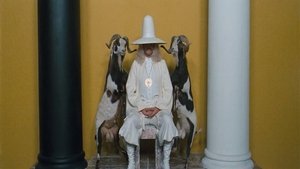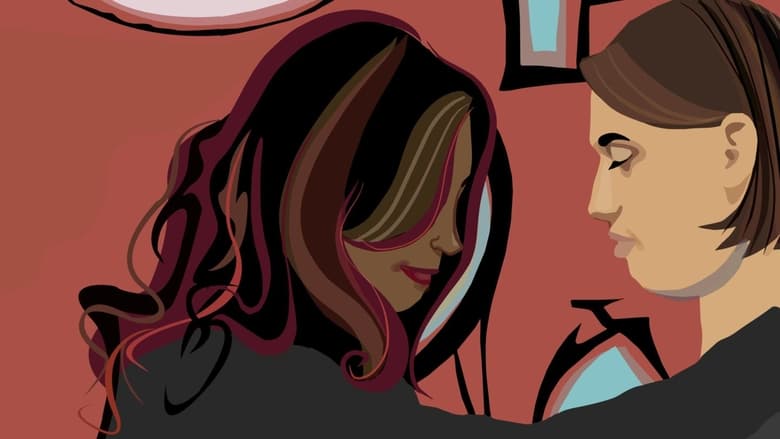Top movies that explore psychedelic trips
From mind-bending visuals to altered perceptions, these films explore the profound impact of psychedelic experiences on the human psyche. Dive into a cinematic journey that transcends reality and challenges your understanding of consciousness.



The world of cinema has long been fascinated by the exploration of altered states of consciousness, offering a unique lens through which to examine the human condition. Films that delve into psychedelic experiences often push the boundaries of visual storytelling, employing surreal imagery, non-linear narratives, and disorienting soundscapes to simulate the effects of mind-altering substances.
One of the most iconic examples is Fear and Loathing in Las Vegas, a cult classic that perfectly captures the chaotic and often hilarious escapades of its protagonists under the influence. Its frantic pacing and distorted visuals are a masterclass in conveying a drug-fueled haze. Similarly, Enter the Void takes a bold, first-person perspective, immersing the viewer directly into the protagonist's out-of-body experiences and hallucinatory visions, creating an incredibly intense and unforgettable cinematic trip.
Beyond just visual spectacle, many of these films also delve into deeper philosophical and psychological themes. The Holy Mountain, for instance, is a surreal masterpiece that blends mysticism, alchemy, and social commentary, offering a profound and often perplexing journey of self-discovery. Even animated features like Waking Life utilize rotoscoping to create a dreamlike quality, perfectly complementing its philosophical dialogues on the nature of reality and existence.
This genre isn't just about depicting drug use; it's about exploring the perception of reality itself. Whether through the lens of horror, drama, or existential pondering, these films invite audiences to question what is real and what lies beyond the ordinary senses, making them not just entertaining, but truly thought-provoking experiences.
14. Requiem for a Dream (2000)
Requiem for a Dream is a harrowing and unflinching look at the devastating effects of addiction. While it doesn't focus on psychedelics, it portrays the descent into drug-induced delusion and despair with a visceral intensity that few films achieve. Director Darren Aronofsky employs a frantic, highly stylized editing technique, often using split screens and rapid-fire montages, to convey the characters' escalating drug use and their deteriorating mental states. The film's relentless pace and powerful performances make it an incredibly difficult but important watch, serving as a stark warning about the all-consuming nature of addiction and the false promises of escape. It's a truly impactful and unforgettable film.

13. Pi (1998)
Darren Aronofsky's debut feature, Pi, is a gritty, black-and-white psychological thriller that delves into the obsessive mind of a brilliant mathematician. Max Cohen, played by Sean Gullette, is searching for a universal number that can unlock the patterns of nature, leading him down a path of increasing paranoia and delusion. While not explicitly about psychedelics, the film masterfully uses distorted visuals, rapid-fire editing, and an unsettling score to simulate Max's deteriorating mental state, which feels akin to a bad trip. Aronofsky's raw and intense filmmaking style immediately established him as a director to watch, showcasing his ability to craft deeply immersive and unsettling experiences.

12. The Cell (2000)
The Cell is a visually striking psychological thriller that takes you deep into the mind of a serial killer. Jennifer Lopez plays a psychotherapist who uses an experimental virtual reality technology to enter the consciousness of a comatose killer in an attempt to find his last victim. The film's strength lies in its stunning and often disturbing visual landscapes, which are designed to represent the warped and fragmented mind of the killer. These sequences are truly imaginative and delve into surreal, almost hallucinogenic, imagery. While the plot has its moments, it's the artistic direction and the exploration of the subconscious that truly makes this film stand out.

11. Mandy (2018)
Panos Cosmatos' Mandy is a visually stunning and utterly bonkers revenge film that descends into a psychedelic nightmare of blood, fire, and heavy metal. Nicolas Cage delivers one of his most unhinged and captivating performances as a man seeking vengeance after a cult attacks his home. The film's use of color, particularly its deep reds and purples, creates an otherworldly and hallucinatory atmosphere that perfectly complements its descent into madness. The pulsating synth score adds another layer to the film's hypnotic and unsettling mood. It's a unique cinematic experience that is both beautiful and brutal, pushing the boundaries of genre filmmaking.

10. The Trip (1967)
Directed by Roger Corman and written by Jack Nicholson, The Trip is a fascinating glimpse into the psychedelic experiments of the 1960s. Peter Fonda stars as a commercial director who takes LSD for the first time, leading to a series of hallucinatory and introspective experiences. While the film was controversial upon its release due to its depiction of drug use, it offers a surprisingly nuanced and often visually inventive look at the inner workings of the mind under the influence. Corman, ever the shrewd filmmaker, even used real LSD experiences from his cast and crew as inspiration for certain scenes, adding a layer of authenticity to the chaotic visuals. It's a time capsule of a very specific era.

9. Easy Rider (1969)
Easy Rider is a quintessential counterculture film that defined a generation. Dennis Hopper and Peter Fonda's journey across America on their motorcycles, funded by a drug deal, becomes a poignant exploration of freedom, rebellion, and the harsh realities of a changing nation. The film's iconic soundtrack, featuring artists like Steppenwolf and The Byrds, perfectly complements the sweeping landscapes and the characters' quest for liberation. It's a powerful statement about the clash between traditional values and the burgeoning hippie movement, and its influence on independent cinema is undeniable. The movie captures a moment in time when the American dream felt both boundless and tragically fragile.

8. The Doors (1991)
Oliver Stone's The Doors takes you on a wild ride through the rise and fall of Jim Morrison and the legendary band. Val Kilmer's portrayal of Morrison is uncanny, capturing the singer's charisma, intensity, and self-destructive tendencies with an almost eerie accuracy. The film doesn't shy away from depicting the band's exploration of psychedelics and their influence on their music and performances, showcasing the counterculture movement of the 1960s. Stone, known for his immersive biographical dramas, creates a truly atmospheric film that transports you back to the era of free love and rock and roll, exploring the blurred lines between art, excess, and genius.

7. Pink Floyd: The Wall (1982)
Pink Floyd: The Wall is far more than a concert film; it's a visceral, often disturbing, cinematic interpretation of the iconic album. Directed by Alan Parker, the movie visually translates the album's themes of isolation, madness, and the dehumanizing effects of society into a stunning and often nightmarish animated and live-action sequence. Bob Geldof delivers a raw performance as Pink, the rock star protagonist spiraling into psychosis. The animation sequences, particularly those by Gerald Scarfe, are truly unforgettable and perfectly capture the album's dark and introspective mood. It's a powerful experience that resonates deeply with anyone who's ever felt alienated.

6. A Scanner Darkly (2006)
Another brilliant rotoscoped effort from Richard Linklater, A Scanner Darkly dives deep into the dystopian future where drug addiction and surveillance are rampant. Based on Philip K. Dick's novel, the film features an impressive cast including Keanu Reeves, Robert Downey Jr., and Woody Harrelson, all delivering compelling performances under the animated veneer. The rotoscoping isn't just a stylistic choice; it effectively blurs the lines between reality and illusion, mirroring the protagonist's own deteriorating perception due to drug use. Dick's personal experiences with drug culture heavily influenced the source material, lending a raw authenticity to the film's bleak and paranoid atmosphere. It's a chilling look at identity and addiction.

5. Waking Life (2001)
Richard Linklater's Waking Life is a truly unique and thought-provoking animated film that explores the nature of dreams, reality, and consciousness through a series of philosophical conversations. Using rotoscoping, a technique where animators trace over live-action footage, the film achieves a dreamlike, fluid aesthetic that perfectly complements its themes. The narrative follows a young man who finds himself in a persistent dream state, encountering various characters who engage in deep discussions about everything from existentialism to free will. It's a film that encourages introspection and offers a gentle, yet profound, journey into the corridors of the mind. Many of the conversations are unscripted, adding to the film's authentic and spontaneous feel.

4. Altered States (1980)
Altered States plunges headfirst into the terrifying possibilities of human consciousness and sensory deprivation, a truly fascinating and unsettling film from director Ken Russell. William Hurt delivers a powerhouse performance as a scientist who experiments with hallucinogenic drugs and isolation tanks, pushing the boundaries of his own mind. The film's special effects, especially for its time, are groundbreaking and effectively convey the chaotic and transformative nature of the psychedelic experience. What's particularly interesting is that the screenplay was written by Paddy Chayefsky, a renowned dramatist known for his realistic works, making his foray into science fiction all the more intriguing. It's a wild ride that makes you question the very nature of reality.

3. The Holy Mountain (1973)
Step into the surreal, symbolic world of Alejandro Jodorowsky's The Holy Mountain, a film that defies categorization and demands multiple viewings. This isn't just a movie; it's a spiritual journey, a philosophical treatise, and a visual spectacle all rolled into one. Jodorowsky, who also stars, crafts a narrative brimming with alchemical symbolism, esoteric rituals, and striking, often bizarre, imagery. The film's production was as wild as the movie itself, with the cast undergoing real spiritual training and Jodorowsky famously using real money to create the gold objects seen on screen. It's a profound and deeply personal work that invites viewers to interpret its many layers, leaving a lasting impression long after the credits roll.

2. Enter the Void (2010)
Prepare to have your mind utterly blown by Enter the Void, Gaspar Noé's audacious and visually stunning exploration of life, death, and the after-effects of a psychedelic overdose. This film is a sensory overload, told almost entirely from a first-person perspective, putting you directly into the disorienting, often terrifying, journey of Oscar, a drug dealer in Tokyo. Noé uses dazzling, kaleidoscopic visuals and a pulsating electronic score to simulate the experience of a drug trip, pushing the boundaries of cinematic storytelling. It's a challenging watch, no doubt, but one that rewards patience with an incredibly unique and thought-provoking experience about consciousness and existence. You won't see anything quite like it.

1. Fear and Loathing in Las Vegas (1998)
Buckle up, because Fear and Loathing in Las Vegas is an absolute trip, a chaotic masterpiece that perfectly captures the spirit of Hunter S. Thompson's iconic novel. Johnny Depp's portrayal of Raoul Duke is nothing short of legendary, embodying the gonzo journalist with an unsettling precision that makes you wonder where the actor ends and the character begins. Terry Gilliam's direction is a fever dream, throwing you into a hallucinatory world of vibrant colors and distorted realities that perfectly mirrors the drug-fueled escapades. From the opening scene, you know you're in for a wild ride that defies conventional storytelling. It's a cult classic for a reason, offering a scathing, hilarious, and ultimately poignant look at the demise of the 1960s counterculture dream. This film isn't just watched; it's experienced.

